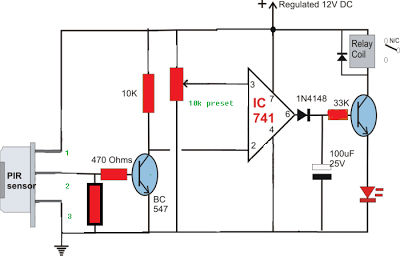Low Voltage PIR Sensor Power Reference – A Quick Fix for Engineers and Hobbyists

The Problem :
When working with low-voltage PIR (Passive Infrared) sensors, a common issue is the sensor not receiving enough power, leading to malfunctioning or no operation at all. This happens when the power supply doesn’t match the required voltage or current specifications of the sensor.
The Solution :
To fix this, you need to ensure that your power supply is stable and matches the sensor’s voltage requirements. If necessary, you can use resistors or capacitors to regulate the current, ensuring your PIR sensor operates smoothly.
Practical Example :
Suppose you’re building a motion-detecting system for a security light. Your PIR sensor requires a 5V supply, but it is powered by a source that provides inconsistent voltage. As a result, the sensor may fail to detect movement, or the light may flicker. By using a stable 5V power supply and adding a resistor to manage current, you can fix the issue and ensure the system works reliably.
Sample Calculation :
Let’s calculate the resistor value needed to limit the current to your PIR sensor:
Sensor requires 5V and draws 20mA (0.02A).
Using Ohm’s Law (R = V/I):
R = 5V / 0.02A = 250Ω.
A 250Ω resistor will ensure that the sensor gets the right amount of power.
Product Suggestion :
For high-quality, reliable components, consider using MOSFETs and flux products for your project. These Made in India components are perfect for stabilizing your sensor’s power supply.




















